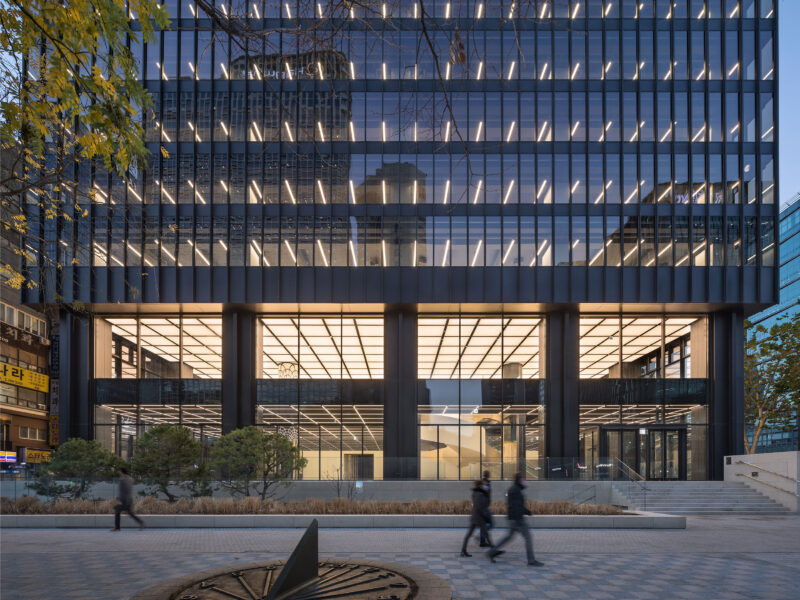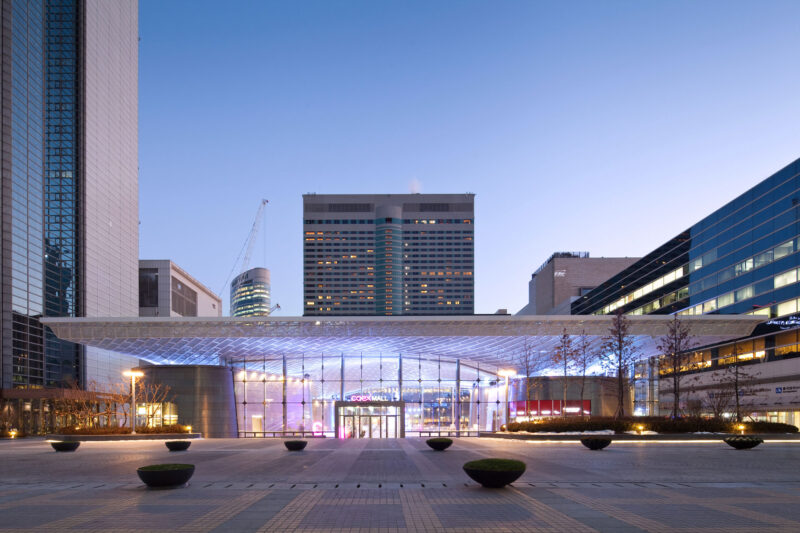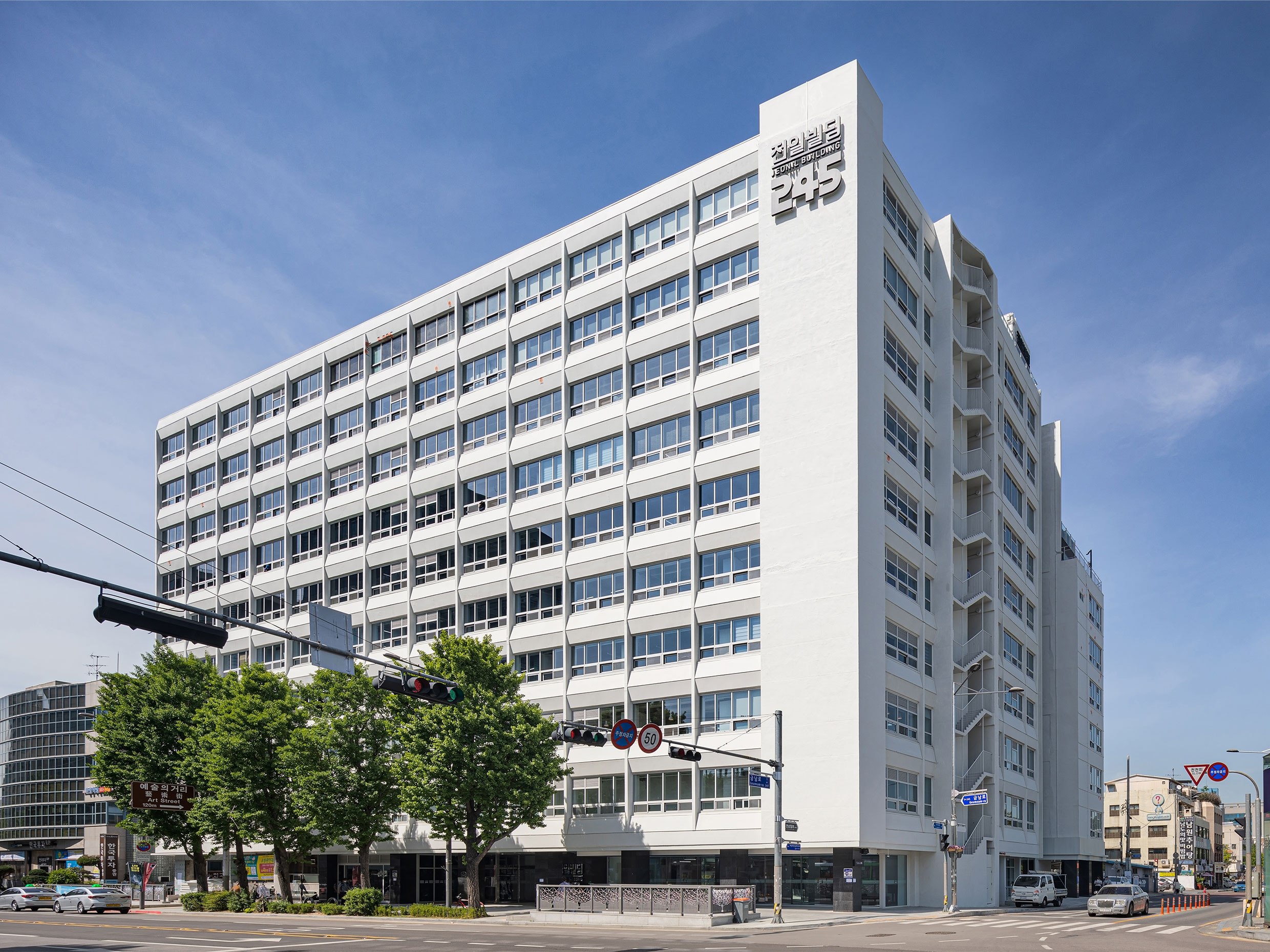
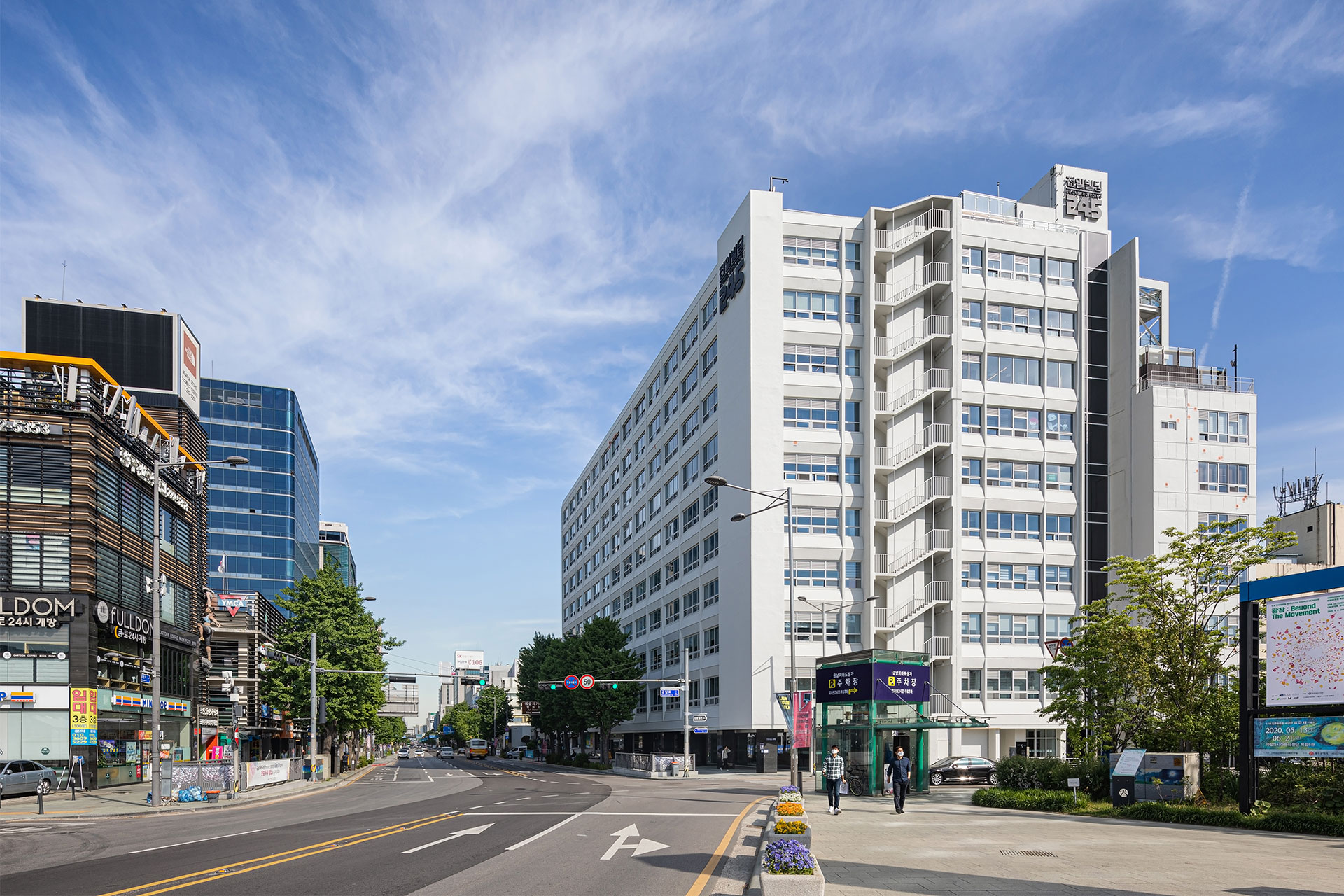
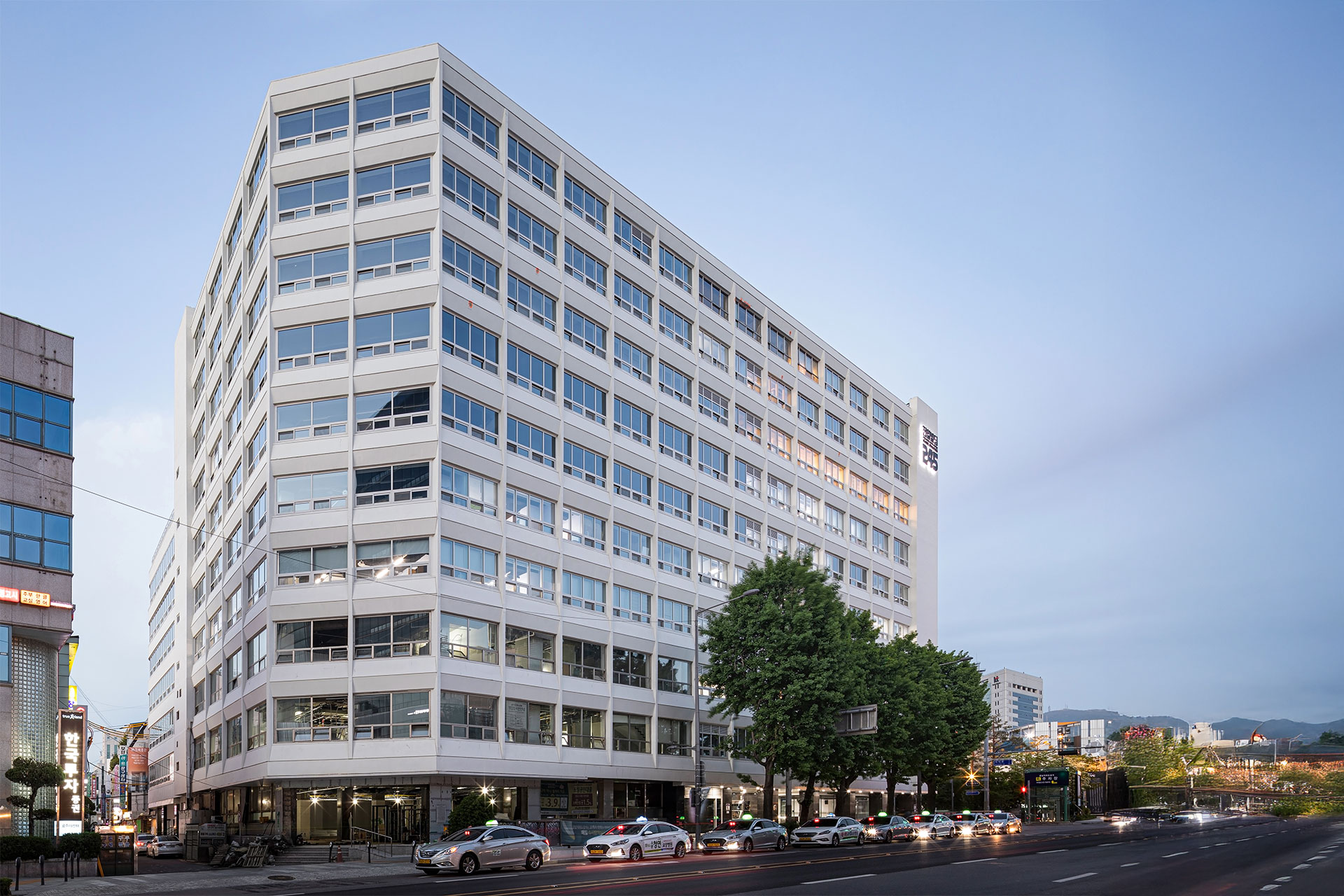
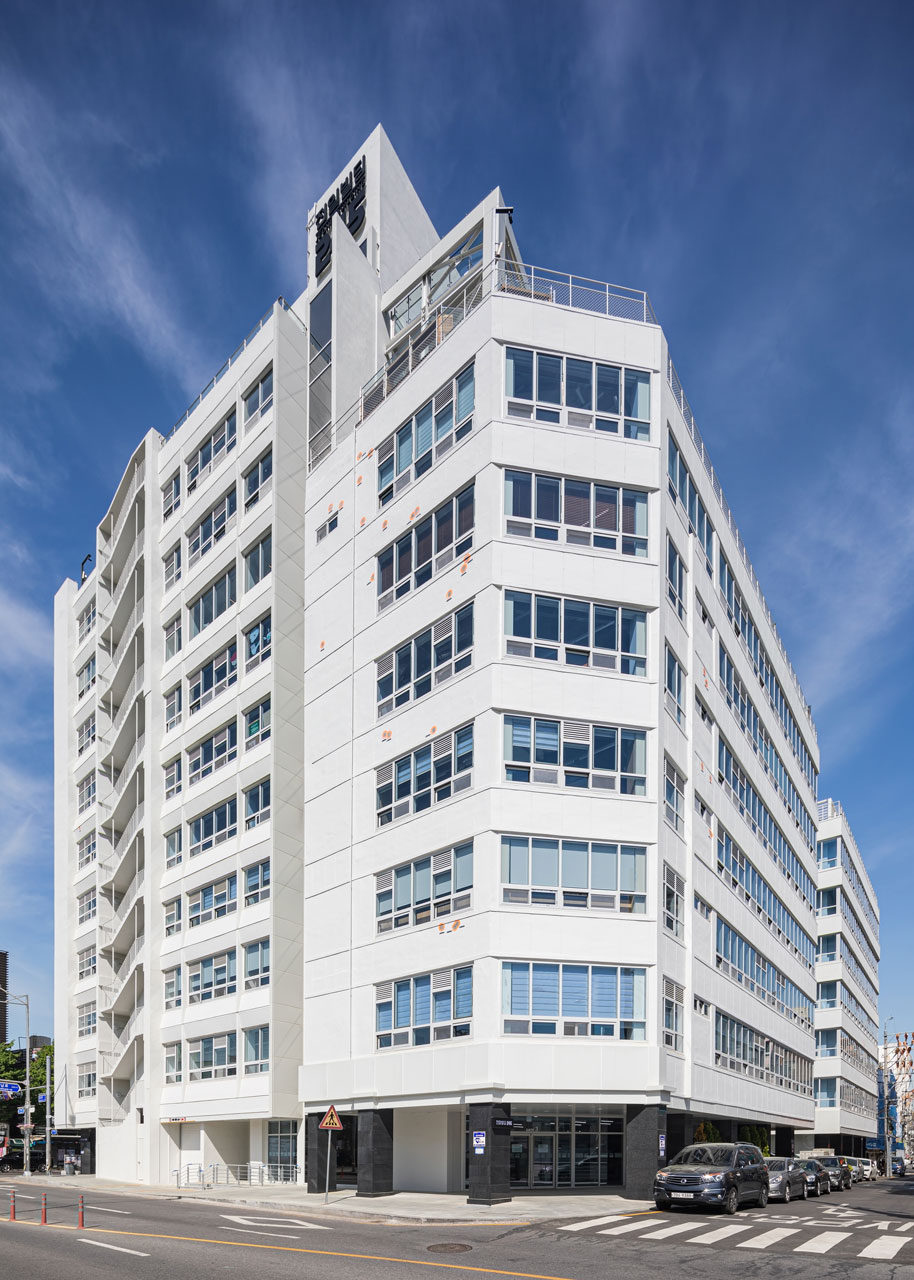
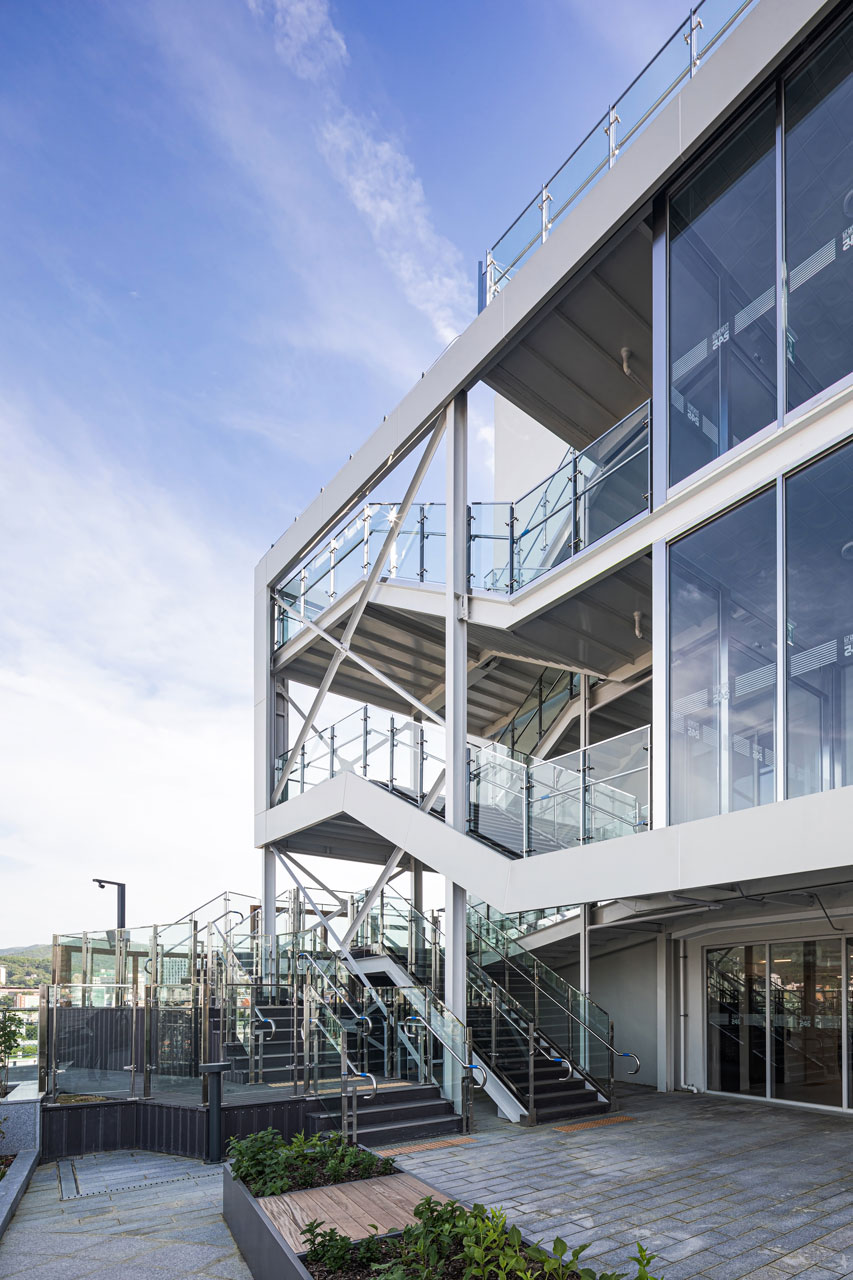

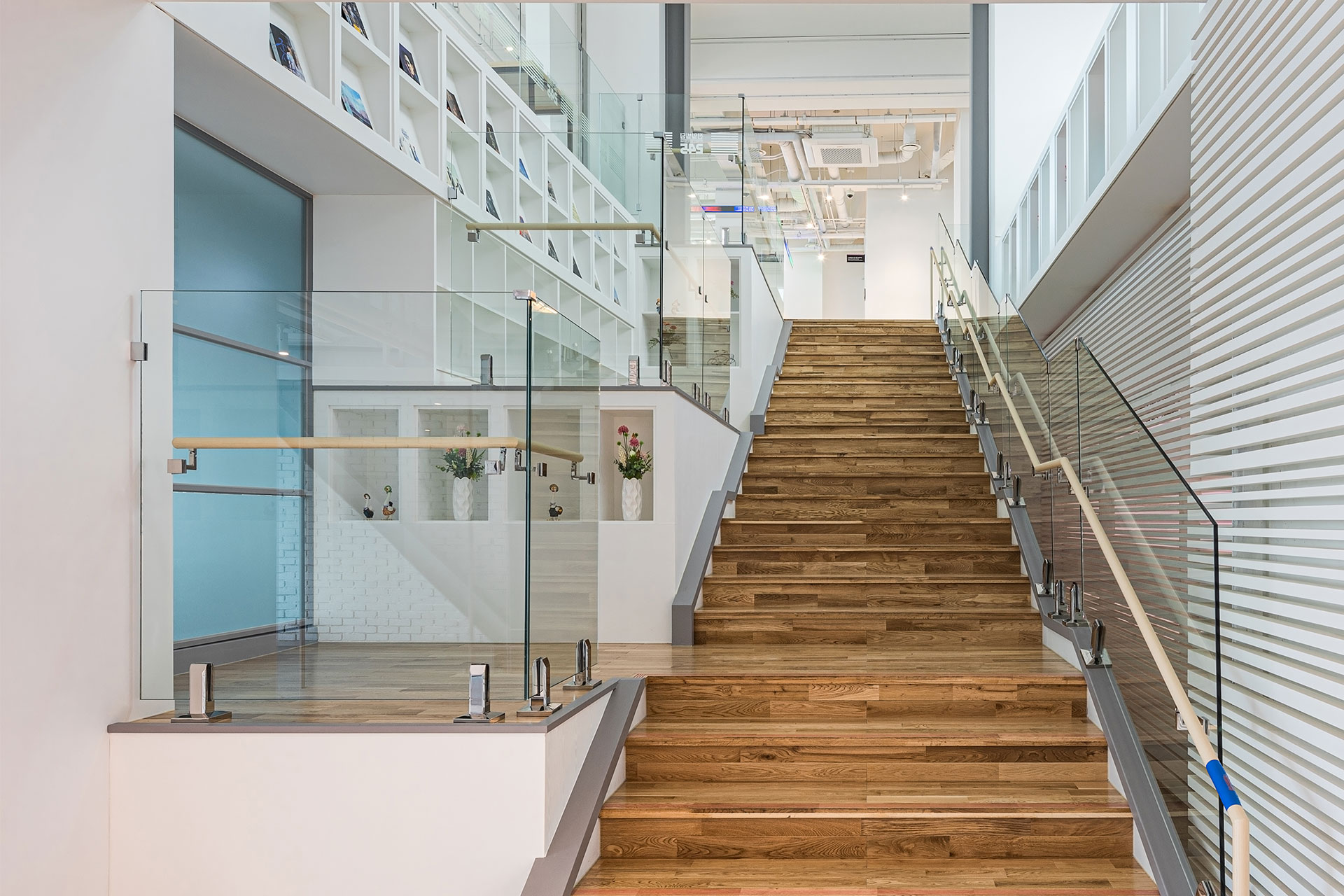
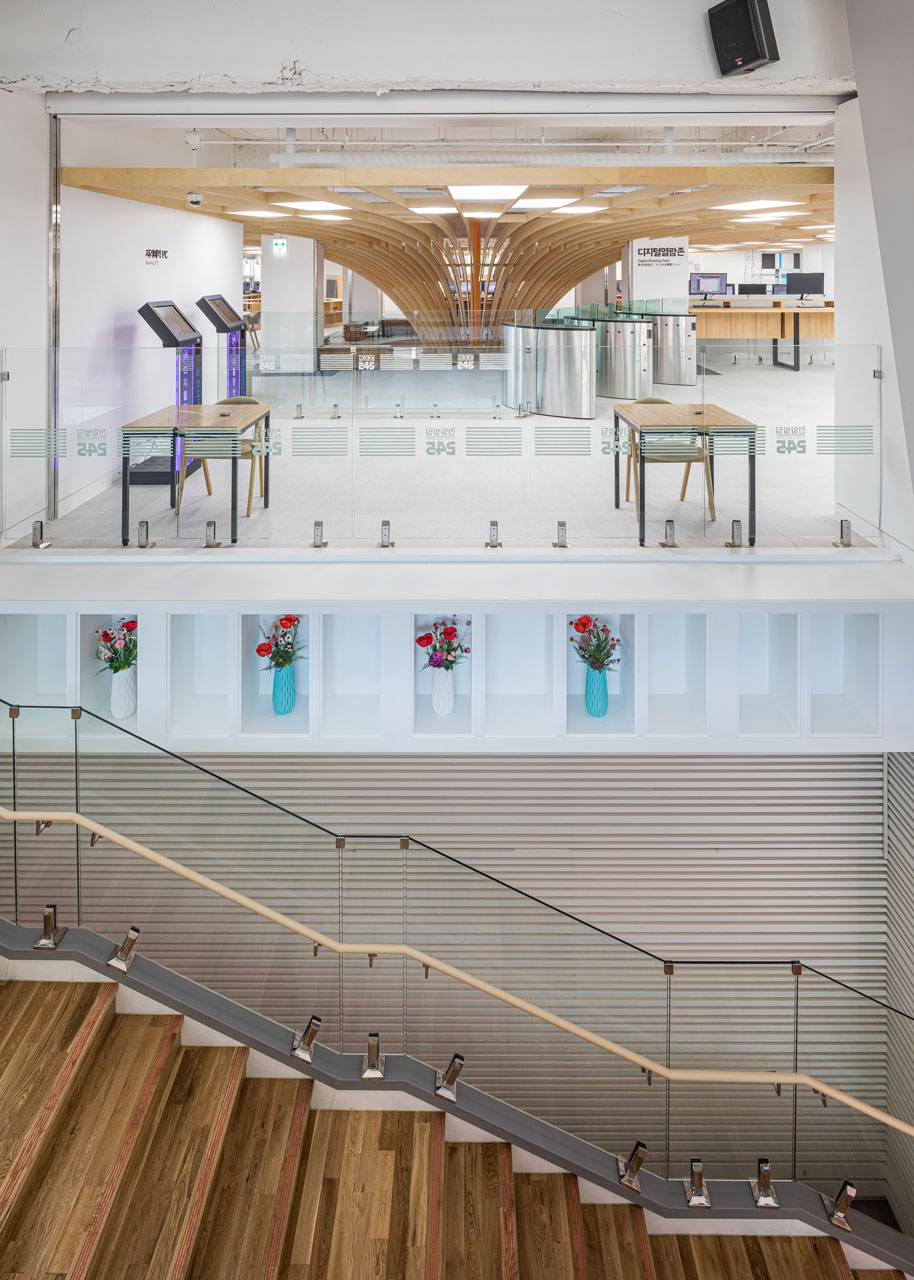
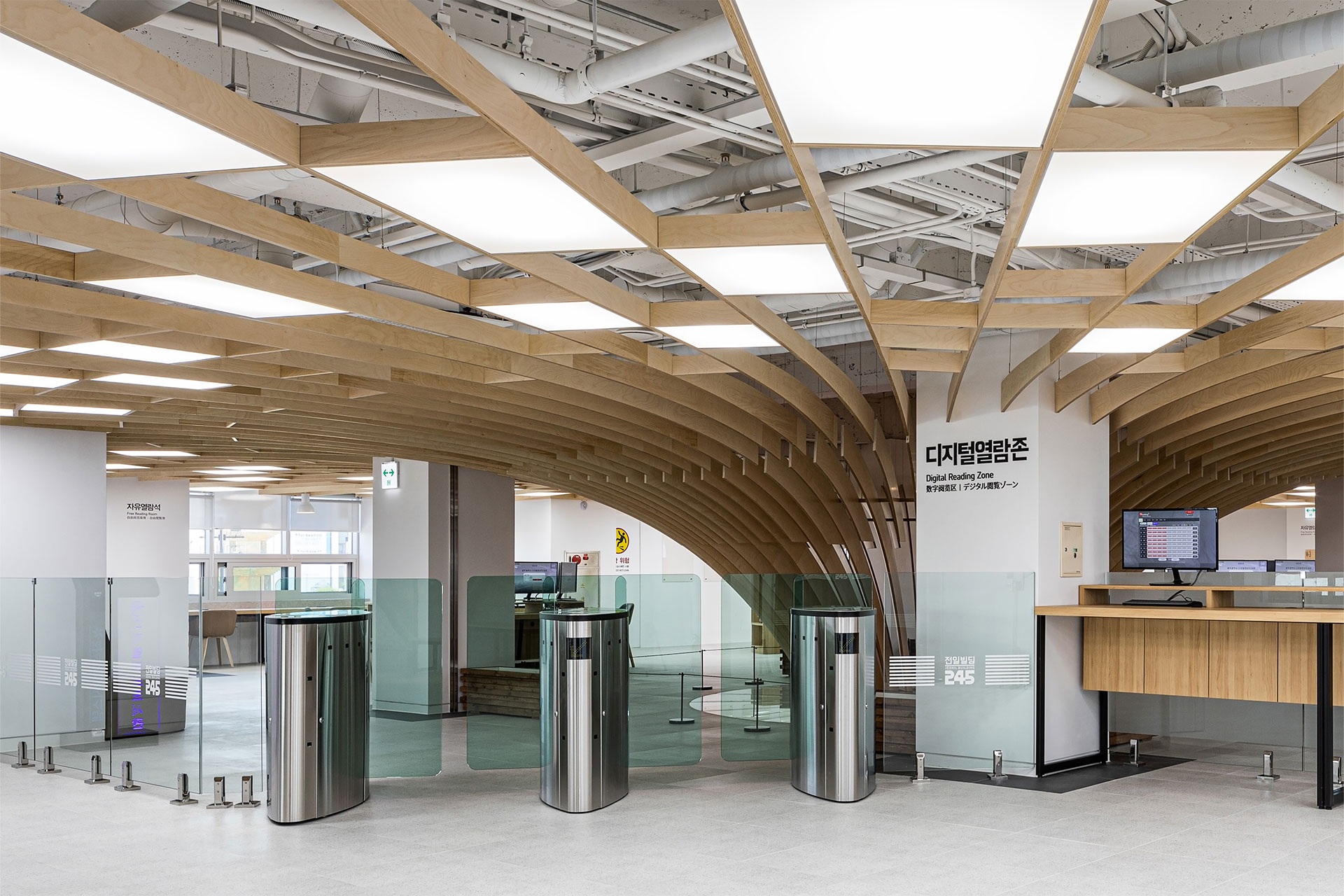
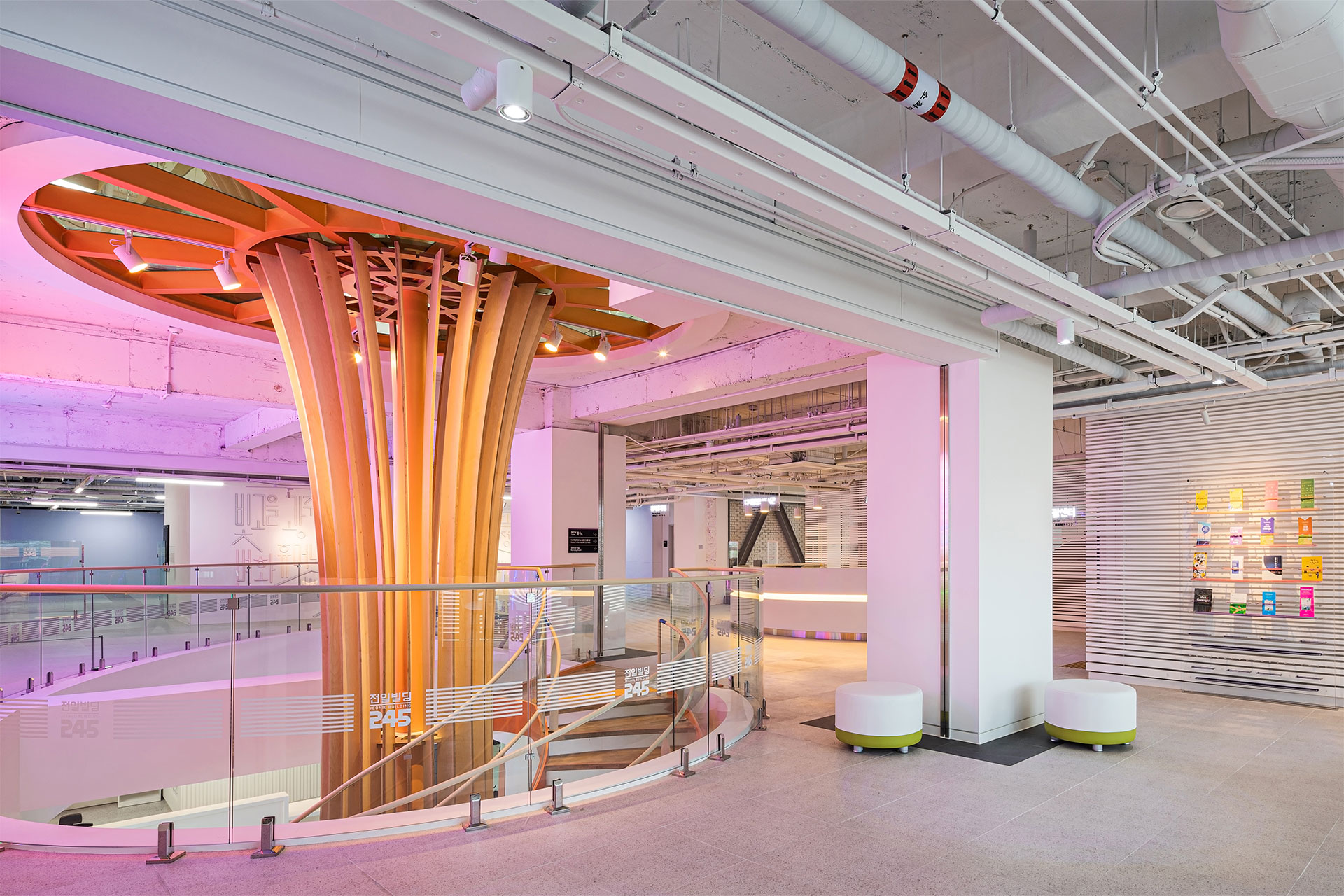
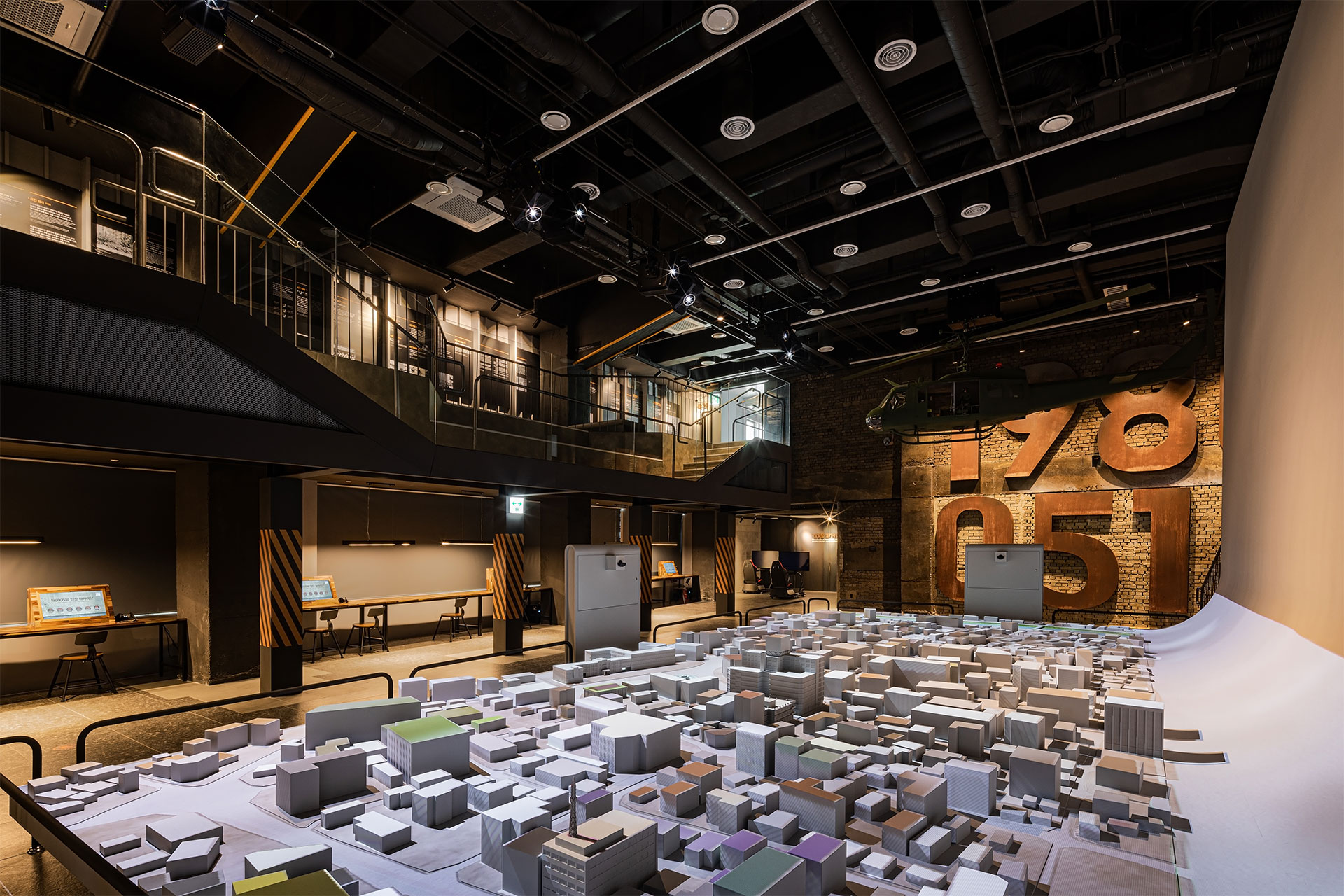
Jeonil Building, located in the heart of Gwangju’s old downtown area at Geumnam-ro 1-ga, has been a symbolic building of the area for over 50 years. It is historically significant as the site where journalists covered the May 18 Democratic Uprising and where helicopter gunfire damage was found. However, the relocation of the Jeollanam-do Provincial Government Office led to the decrease of downtown population and the decline of functional and symbolic roles of the building, which was since neglected.
With the opening of the National Asian Culture Center (ACC), a turning point for the revitalization of the old downtown, there arose a civic consensus to use Jeonil Building as a cultural complex linked to the ACC. A remodeling design was proposed under the concept of “coexistence of old and new.” Leveraging its location adjacent to the ACC — the nationally significant cultural powerhouse — the building aims to host cultural creation community facilities that connect, develop, and support cultural contents produced at the ACC, thereby renewing the building’s growth potential and restoring its symbolic value.
Article
-
Status
Completed
-
Awards
- 2022 26th Gwangju Metropolitan City Architecture Awards, Excellence Award in the Remodeling Category
- 2020 Korea Remodeling Architecture Awards, Grand Prize
- 2020 Korea Space Culture Awards, Excellence Award
-
Client
Gwangju Metropolitan City Urban Development Corporation
-
Program
Renovation, Cultural, Public
-
Design Year
2016
-
Completion Year
2020
-
Location
Dong-gu, Gwangju
-
Site area
2,778.10m2
-
Gross Floor Area
19,321.68m2
-
Building Area
2,489.40m2
-
Number of Levels
B1, 10F
-
Design
-
Partner
ISP Architect & Engineering
-
Participants










Jeonil Building, located in the heart of Gwangju’s old downtown area at Geumnam-ro 1-ga, has been a symbolic building of the area for over 50 years. It is historically significant as the site where journalists covered the May 18 Democratic Uprising and where helicopter gunfire damage was found. However, the relocation of the Jeollanam-do Provincial Government Office led to the decrease of downtown population and the decline of functional and symbolic roles of the building, which was since neglected.
With the opening of the National Asian Culture Center (ACC), a turning point for the revitalization of the old downtown, there arose a civic consensus to use Jeonil Building as a cultural complex linked to the ACC. A remodeling design was proposed under the concept of “coexistence of old and new.” Leveraging its location adjacent to the ACC — the nationally significant cultural powerhouse — the building aims to host cultural creation community facilities that connect, develop, and support cultural contents produced at the ACC, thereby renewing the building’s growth potential and restoring its symbolic value.


